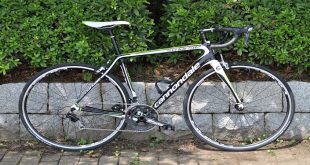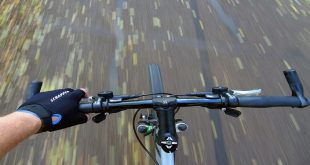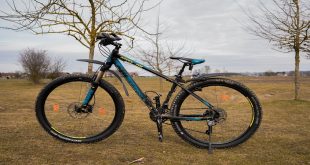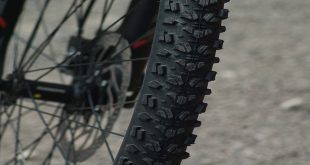Yes, drop handlebars can be put on a mountain bike for a more aerodynamic riding position. If you want to transform your mountain bike into a more aggressive and aerodynamic machine, you might be wondering if it’s possible to install drop handlebars.
Well, the answer is yes! Drop handlebars offer a different grip position that allows riders to adopt a more streamlined posture, reducing wind resistance and enhancing speed. While drop handlebars are commonly found on road bikes, many mountain bike enthusiasts have started to embrace this modification for their off-road adventures.
We will explore the benefits of drop handlebars on a mountain bike and provide some insights into the installation process. So, let’s dive in and discover the world of drop handlebars on mountain bikes!
The Basics Of Drop Handlebars
Drop handlebars are a popular component used in road cycling, but can you put them on a mountain bike? In this article, we’ll explore the definition, design, functionality, as well as the benefits and drawbacks of using drop handlebars on a mountain bike. So, let’s dive in!
Definition And Explanation Of Drop Handlebars
Drop handlebars, also known as road handlebars, are bicycle handlebars characterized by their distinct shape that extends downward and forward, forming a drop curve. They are commonly found on road bikes and are designed to offer cyclists multiple hand positions, promoting a more aerodynamic riding posture.
Overview Of Their Design And Functionality
The design of drop handlebars consists of a main horizontal bar, often referred to as the top tube, which allows the cyclist to grip it comfortably; this is where the brake levers and gear shifters are usually mounted. From the top tube, the handlebars extend downwards and forwards, forming a drop curve that provides additional hand positions known as the drops. These drops widen the cyclist’s stance and position the hands lower, enabling a more efficient and streamlined riding posture.
The functionality of drop handlebars lies in the different hand positions they offer. Cyclists can choose to ride with their hands on the top tube for a relaxed upright position, on the brake hoods for quick access to the brakes and shifters, or in the drops for an aerodynamic position during high-speed descents or sprints.
Benefits And Drawbacks Of Using Drop Handlebars
Using drop handlebars on a mountain bike can have its advantages and disadvantages. Let’s take a look at some of them:
| Benefits | Drawbacks |
|---|---|
|
|
Before deciding to put drop handlebars on your mountain bike, carefully consider these benefits and drawbacks, as they will impact your riding experience both on and off the trails.
Compatibility Of Drop Handlebars With Mountain Bikes
Are you a mountain bike enthusiast looking to enhance your riding experience? Perhaps you’re considering installing drop handlebars on your mountain bike. While drop handlebars are commonly associated with road bikes, many cyclists wonder if they can also be compatible with mountain bikes. In this article, we will delve into the compatibility of drop handlebars with mountain bikes, exploring the differences between mountain bike handlebars and drop handlebars, as well as the factors to consider when determining compatibility. So let’s dive right in!
Exploring The Differences Between Mountain Bike Handlebars And Drop Handlebars
Before we determine whether drop handlebars can be installed on a mountain bike, let’s first understand the key differences between mountain bike handlebars and drop handlebars.
Mountain bike handlebars, typically referred to as flat handlebars, offer a wider and more upright position. These handlebars are designed to provide better control and stability, especially during off-road riding. The wider grip provides excellent leverage when maneuvering through tricky terrains and navigating tight corners. Additionally, flat handlebars are suitable for riders who prefer a more comfortable and relaxed riding position.
In contrast, drop handlebars, commonly found on road bikes, offer a more aerodynamic and aggressive riding position. They have a curved shape that allows riders to change hand positions, enabling better leverage during speed-focused riding. The drop position, where the rider’s hands rest on the lower, curved section of the handlebars, offers improved aerodynamics and efficiency, making them ideal for long rides and sprinting.
Factors To Consider When Determining Compatibility
While drop handlebars can provide certain benefits in terms of aerodynamics and hand position options, there are several factors to consider before determining if they can be installed on a mountain bike frame:
- Intended Use: Think about how you primarily use your mountain bike. If you enjoy cross-country or endurance rides that involve long hours in the saddle, drop handlebars may provide some advantages. However, if you frequently tackle technical trails or engage in aggressive downhill riding, flat handlebars are generally more suitable.
- Bike Geometry: Consider the geometry of your mountain bike frame. Drop handlebars may require adjustments to the bike’s geometry to ensure a comfortable and balanced riding experience. Take into account factors such as the bike’s top tube length, head tube angle, and stack height.
- Component Compatibility: Check if your mountain bike’s components, such as shifters, brake levers, and stem, are compatible with drop handlebars. You may need to invest in additional parts or seek guidance from a professional bike mechanic to ensure everything fits together seamlessly.
Can Drop Handlebars Be Installed On A Mountain Bike Frame?
The answer to whether drop handlebars can be installed on a mountain bike frame is yes, it is possible. However, it’s worth noting that there may be limitations and challenges associated with the compatibility and performance of drop handlebars on a mountain bike frame.
If you are determined to give it a try, consulting with a knowledgeable bike shop or a professional bike mechanic is essential. They can help assess your specific bike setup, offer guidance on component compatibility, and ensure that the installation is done safely and correctly.
Remember, the decision ultimately comes down to personal preference and intended use. While drop handlebars can offer certain benefits, it’s crucial to consider the terrain you frequently ride on and the type of riding you enjoy before making any modifications to your mountain bike.
So, there you have it! Now that you have a better understanding of the compatibility between drop handlebars and mountain bikes, you can make an informed decision based on your riding style and preferences. Happy riding!
Converting A Mountain Bike To Use Drop Handlebars
Are you tired of riding your mountain bike with flat handlebars and want to switch to drop handlebars for a more aerodynamic and comfortable riding experience? With a little effort and the right tools, you can convert your mountain bike to use drop handlebars. In this step-by-step guide, we will walk you through the conversion process, highlighting the tools and equipment you need and sharing tips for a successful conversion.
Step-by-step Guide For Converting A Mountain Bike To Drop Handlebars
Converting a mountain bike to use drop handlebars requires a systematic approach. Follow this step-by-step guide to ensure a smooth and effective conversion:
- Prepare your mountain bike: Begin by removing the existing handlebars, grips, and shifters. Ensure that your bike is clean and free from any dirt or debris.
- Choose the right drop handlebars: Select drop handlebars that are compatible with your mountain bike’s stem size and clamp diameter. Measure the width and drop of the handlebars to suit your riding preferences.
- Install the new handlebars: Carefully align the drop handlebars with the stem, making sure they are centered. Adjust the angle and height to match your desired riding position. Securely tighten the bolts to ensure a stable installation.
- Attach brake levers and shifters: Install the brake levers and shifters onto the drop handlebars, following the manufacturer’s instructions. Ensure that they are positioned comfortably within reach.
- Adjust the brake and shifter cables: Carefully re-route the brake and shifter cables along the frame, ensuring they are not too tight or loose. Test the functionality of the brakes and gears before proceeding.
- Replace the tape or grips: Wrap handlebar tape or install new grips to improve grip and add cushioning. Make sure the tape is wrapped tightly and evenly to prevent slipping during rides.
- Fine-tune the fit: Take your newly converted mountain bike for a test ride and make any necessary adjustments to the handlebars, saddle, and other components for maximum comfort and performance.
Tools And Equipment Needed For The Conversion Process
Before you begin the conversion, gather the following tools and equipment:
| Tools | Equipment |
|---|---|
| – Hex wrench set | – Drop handlebars |
| – Screwdriver set | – Brake levers |
| – Cable cutters | – Shifters |
| – Cable housing cutter | – Handlebar tape or grips |
| – Cable ferrules | |
| – Electrical tape |
Tips For Ensuring A Successful Conversion
Here are some essential tips to help you achieve a successful conversion:
- Take accurate measurements: Measure your mountain bike’s stem size, clamp diameter, and your desired handlebar width and drop to ensure compatibility.
- Follow manufacturer instructions: Read the instructions carefully when installing the new handlebars, brake levers, and shifters to avoid any potential damage or incorrect installation.
- Double-check cable routing: Ensure that the brake and shifter cables are routed correctly along the frame, avoiding any kinks or sharp bends.
- Test the brakes and gears: After completing the conversion, test the functionality of the brakes and gears to ensure they are responsive and smooth.
- Seek professional assistance if needed: If you are uncertain about any step or lack the necessary tools or skills, it’s advisable to consult a professional bike mechanic for assistance.
Considerations And Adjustments
Considerations and Adjustments When it comes to upgrading your mountain bike, one option to consider is installing drop handlebars. Drop handlebars, commonly found on road or gravel bikes, offer a different riding experience and can enhance your bike’s versatility. However, before making this modification, there are a few key considerations and necessary adjustments to keep in mind. In this article, we will explore how drop handlebars affect bike fit and geometry, the adjustments you need to make to accommodate them on a mountain bike, and the importance of professional assistance for a proper fitting.
How Drop Handlebars Affect Bike Fit And Geometry
Installing drop handlebars on a mountain bike can significantly change the bike’s fit and geometry. The key difference between drop handlebars and the flat or riser handlebars typically found on mountain bikes is the hand position. Drop handlebars offer multiple hand positions which can improve comfort and enhance aerodynamics. However, the change in hand position alters the overall reach and stack height of the bike.
- Effect on Reach: Drop handlebars typically have a longer reach compared to flat or riser handlebars. This means your body position will be more stretched out, potentially placing more strain on your back and shoulders. If you have a shorter torso or prefer a more upright riding position, it’s important to consider this change in reach.
- Effect on Stack Height: Another factor to consider is the change in stack height. Drop handlebars tend to have a lower stack height, which means your handlebars will be positioned lower than before. This lowers your overall riding position, making it more aggressive and aerodynamic.
However, if you have any back or neck issues, a lower stack height may aggravate these conditions.
Necessary Adjustments To Accommodate Drop Handlebars On A Mountain Bike
To properly accommodate drop handlebars on your mountain bike, there are a few adjustments that need to be made. These adjustments will help optimize your riding position and ensure a comfortable and safe riding experience. It is recommended to consult with a professional bike mechanic or bike fit specialist to ensure a proper setup. Here are the necessary adjustments:
- Stem Length and Angle: The stem connects the handlebars to the fork steerer tube. With drop handlebars, you may need a shorter or longer stem, depending on your reach preference. Additionally, the stem angle may need to be adjusted to maintain a comfortable wrist position.
- Brake and Shifter Positioning: With drop handlebars, the position of your brake levers and shifters will need to be adjusted. It’s essential to find a position that allows easy reach and operation of these controls while maintaining a comfortable hand position on the drops.
- Cable and Housing Length: Depending on the specific drop handlebars you choose, you may need to adjust the length of your brake and shifter cables and housing. This ensures smooth shifting and braking without any excessive tension or slack.
Importance Of Professional Assistance For Proper Fitting And Adjustments
While it may be tempting to tackle these adjustments on your own, seeking professional assistance for a proper fitting is highly recommended. A professional bike mechanic or bike fit specialist has the knowledge and expertise to make precise adjustments that will optimize your riding position and ensure a more enjoyable experience on your modified mountain bike.
- Accurate Measurements: Professionals have the proper tools and techniques to take accurate measurements, considering aspects like your body proportions, flexibility, and riding style. This ensures an individualized fitting that maximizes comfort and performance.
- Experience and Expertise: Bike mechanics and fit specialists have experience working with various bike setups and handlebar configurations. They understand the nuances and intricacies of making adjustments and can provide valuable insights into optimizing your drop handlebar setup on a mountain bike.
- Proper Alignment and Safety: A professional fitting ensures that all adjustments are made correctly and safely. This includes aligning brake levers and shifters, adjusting cable tension, and properly torquing all bolts. This attention to detail reduces the risk of mechanical issues and enhances your safety while riding.
In conclusion, installing drop handlebars on a mountain bike can provide a unique riding experience and enhance your bike’s versatility. However, it is crucial to consider the impact on bike fit and geometry and make the necessary adjustments to ensure a comfortable and safe setup. Seeking professional assistance for a proper fitting is highly recommended, as it ensures accurate measurements, leverages experience and expertise, and guarantees proper alignment and safety.
Riding Experience And Performance With Drop Handlebars On A Mountain Bike
Exploring The Impact Of Drop Handlebars On Mountain Biking Performance
Adding drop handlebars to a mountain bike can significantly transform your riding experience and overall performance. These handlebars, typically found on road bikes, offer a more aerodynamic and aggressive riding position, allowing you to tackle challenging terrains with enhanced control and stability.
One of the main advantages of drop handlebars on a mountain bike is the improved aerodynamics they provide. With a lower and narrower grip position, you can reduce wind resistance and achieve higher speeds on flatter or downhill sections. This streamlined position also enables you to maintain better control over your bike when navigating technical descents, as your weight is distributed more evenly between the front and rear wheels.
Adjustments To Riding Style And Technique When Using Drop Handlebars
The use of drop handlebars on a mountain bike requires some adjustments to your riding style and technique. Firstly, you will need to adapt to a more forward-leaning position, shifting your weight slightly more towards the front of the bike. This adjustment improves maneuverability and allows for better handling on steep descents and tight corners.
Furthermore, riding with drop handlebars requires a modified hand position. Instead of gripping the handlebars near the stem, you will grip the lower part of the drop bars. This hand position optimizes your control over the bike, giving you a more secure grip and reducing the chances of your hands slipping off during bumpy rides or intense braking.
Comparison Of Riding Experiences With Drop Handlebars Versus Traditional Mountain Bike Handlebars
Comparing the riding experiences between drop handlebars and traditional mountain bike handlebars reveals some notable differences. When it comes to comfort, traditional mountain bike handlebars tend to provide a more relaxed and upright riding position, suitable for longer rides and endurance cycling.
However, drop handlebars offer a more aggressive and efficient riding position, ideal for short bursts of speed and technical descents. In terms of control and maneuverability, drop handlebars take the lead. The lower grip position allows you to better distribute your weight, resulting in improved bike handling and stability. Additionally, the ability to switch hand positions on drop handlebars provides more versatility during various trail conditions, ensuring better adaptability to different riding scenarios.
In conclusion, adding drop handlebars to your mountain bike can significantly enhance your riding experience and overall performance. While it requires some adjustments to your riding style and technique, the benefits of improved aerodynamics, control, and maneuverability outweigh the initial learning curve. Whether you are a seasoned rider looking to explore new challenges or a beginner seeking improved performance, drop handlebars offer a valuable upgrade to your mountain biking adventures.
Frequently Asked Questions For Can You Put Drop Handlebars On A Mountain Bike?
Can You Convert A Mountain Bike To Drop Handlebars?
Yes, you can convert a mountain bike to drop handlebars. However, it requires some modifications and may not be suitable for all bikes. Consider consulting a professional to ensure proper installation and compatibility with your bike’s frame and components.
What Are The Benefits Of Using Drop Handlebars On A Mountain Bike?
Using drop handlebars on a mountain bike can enhance aerodynamics, improve control, and provide multiple hand positions for long rides. It can also optimize your body position and reduce strain on your neck and back. However, it’s important to consider your riding style and terrain before making the switch.
Will Putting Drop Handlebars On A Mountain Bike Affect Its Performance?
Putting drop handlebars on a mountain bike may affect its performance depending on the intended use. While it can provide advantages on smoother terrain and for long-distance rides, it may not be ideal for technical off-road trails. Consider your riding preferences and consult with a bike specialist to determine if it’s the right choice for you.
Conclusion
Adding drop handlebars to a mountain bike can enhance your riding experience by providing a more aerodynamic position and improved overall control. While the conversion process may require some adjustments and considerations, it is definitely possible. Remember to consult with a professional and ensure your bike is compatible with drop handlebars before making any modifications.
 AmFana Pedal through life's journey: Unchain the Adventure!
AmFana Pedal through life's journey: Unchain the Adventure!





